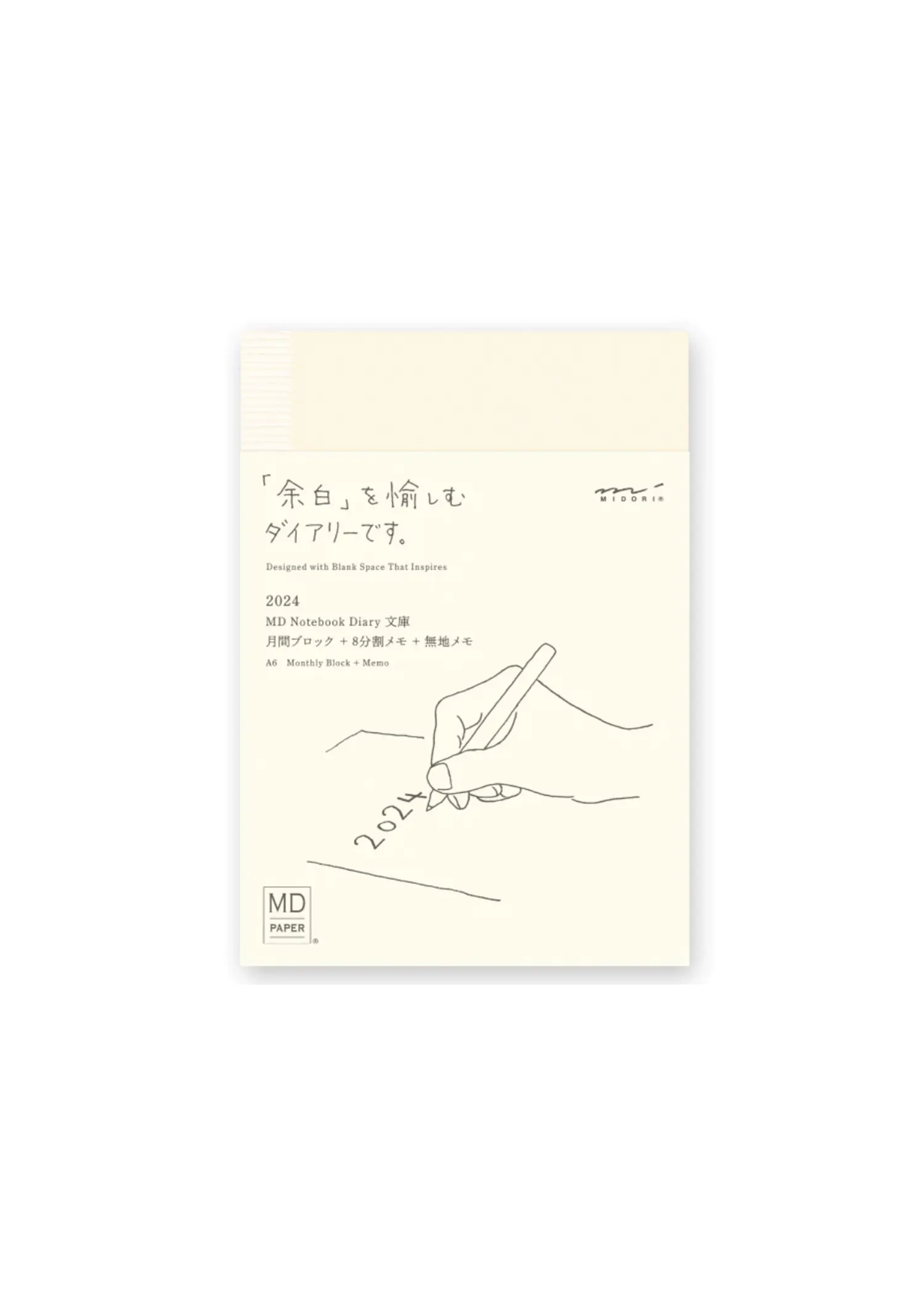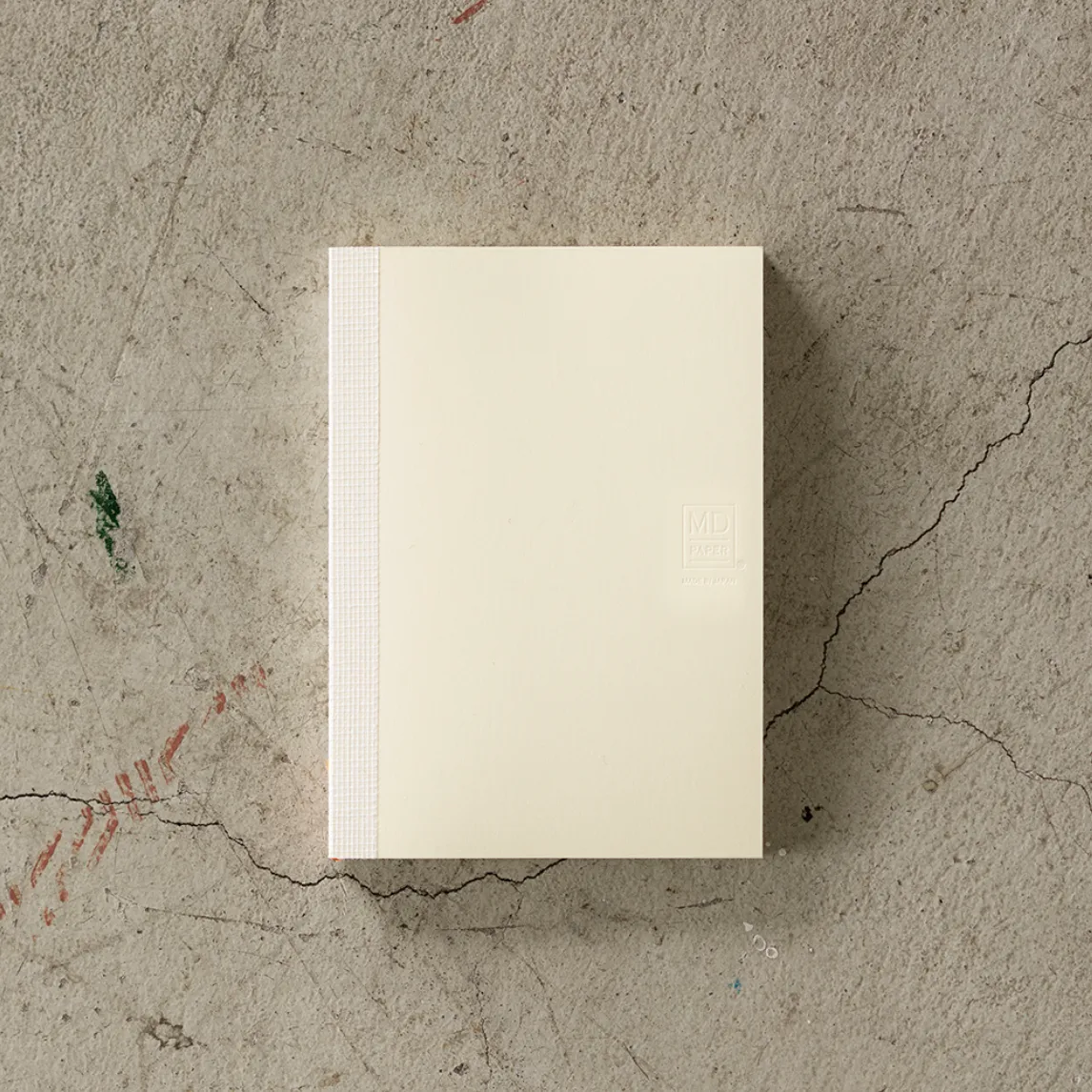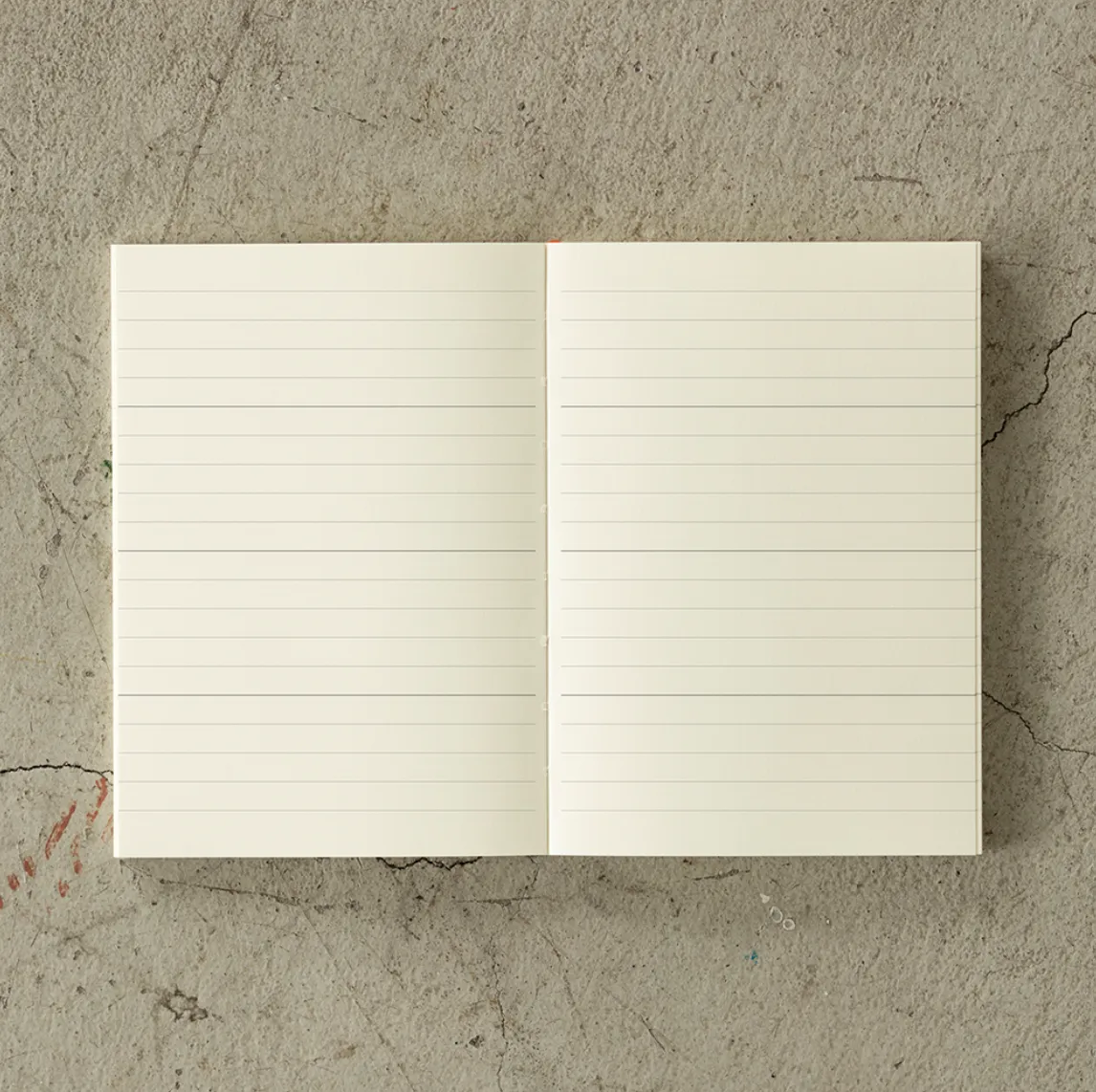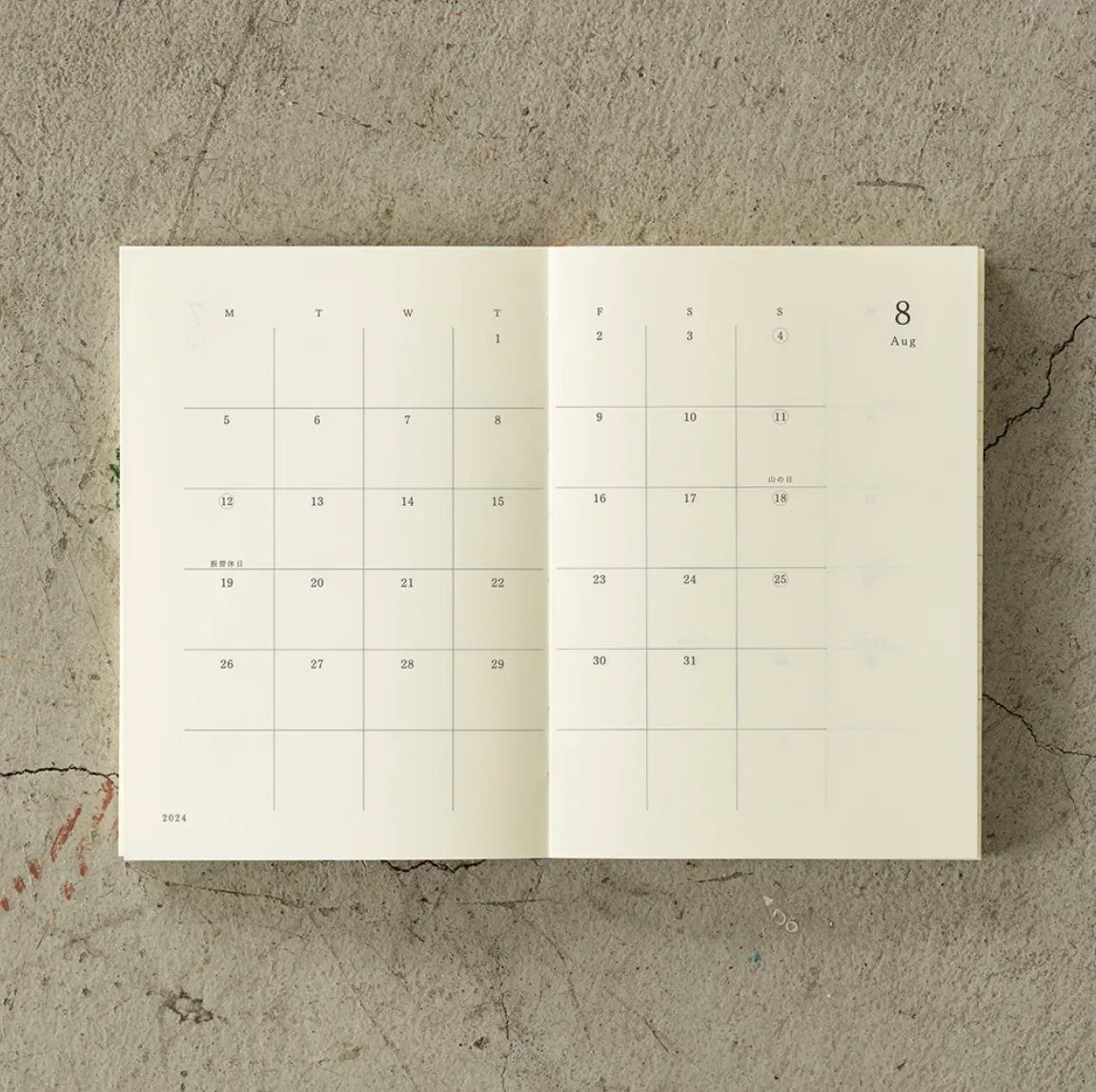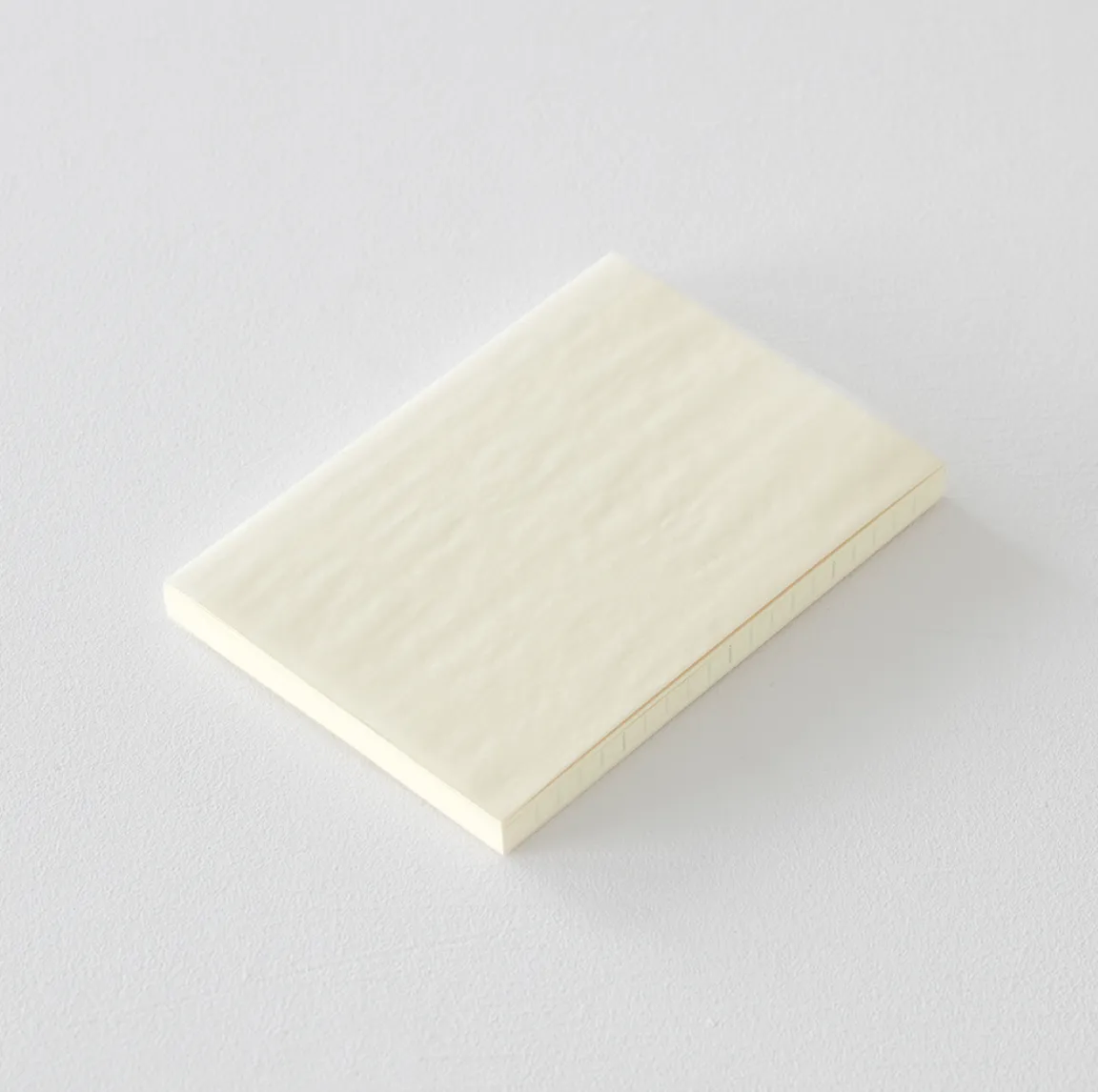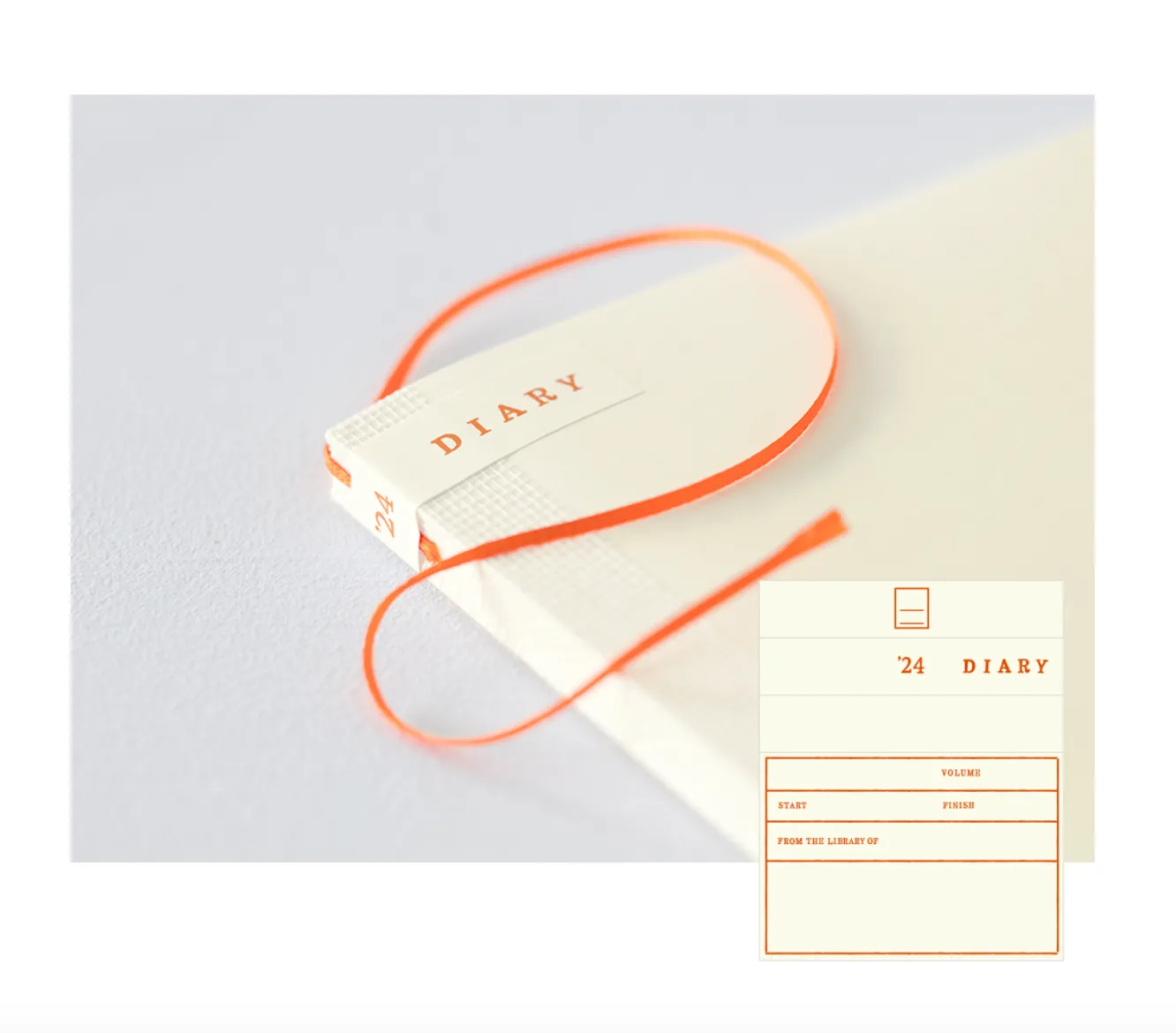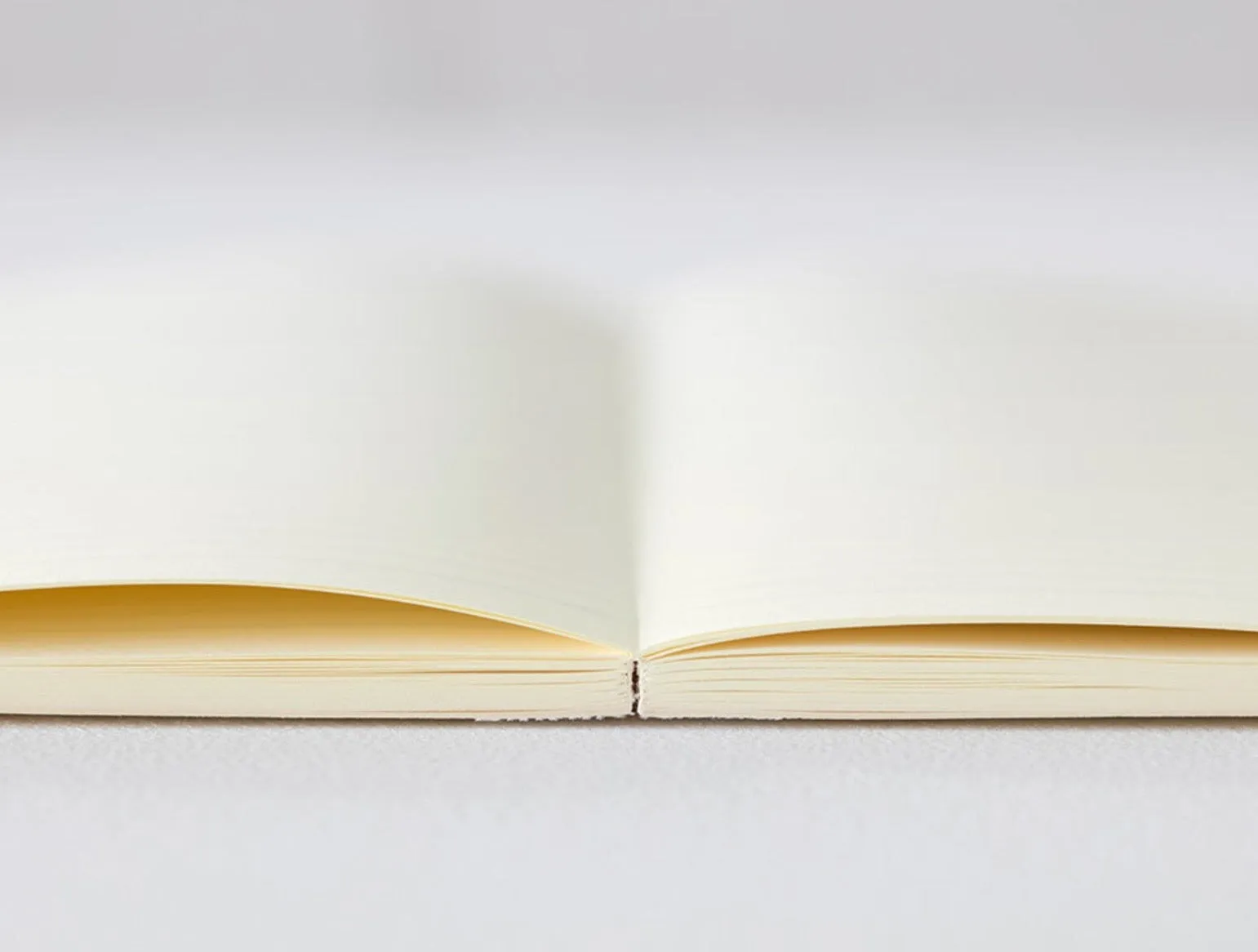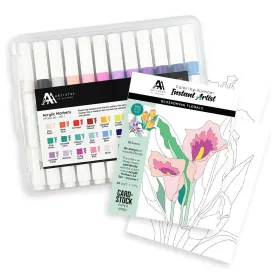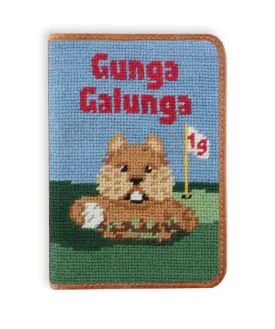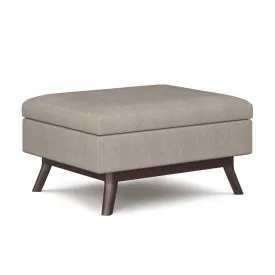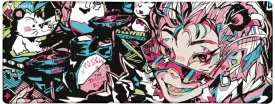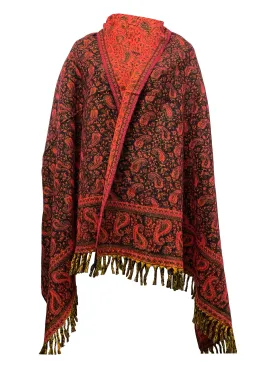The MD Notebook Diary has an appealing minimal design that combines the original functions of a diary with freedom of a notebook. Based on the MD Notebook, this diary is simple and easy to use to stimulate your creativity. With plenty of blank space and a simple, easy-to-use format, this diary is ideal for jotting down your ideas and inspirations. It is composed of a block-type monthly schedule, ruled pages with eight horizontal dividers that can also be used for a week's schedule, and plain memo pages. It features the famous MD PAPER that pairs wonderfully with fountain pens and a flat lay binding providing a smooth writing experience. It is characterized by ample space and a simple, easy-to-use format, that stimulates the creativity of the user.
This diary includes block-type monthly schedule pages and pages divided into eight sections across a two-page spread for use as a weekly schedule. There are also blank pages. You can record your year even more vividly by writing down your daily inspirations on sheets of and attaching them to the pages.
The monthly schedule pages have plenty of blank space around the edges to add notes and drawings. These pages are designed so that you can combine your monthly plans with notes, to-do items, and sketches of your ideas.Lined note pages are divided into eight sections across a two-page spread, to make your weekly diary flexible.
This notebook pairs well with the Midori A6 Cover in , , and Compatible clip band available . Mini clip pen holders available .
- A5: 8.3" x 5.8"
- Bookmark ribbon with index label
- Monthly spread December 2023- January 2025
- Annual calendar, monthly schedule, 113 lined pages, 32 plain memo pages
- 175 total pages
- Made in Japan
Since the 1950’s Midori has been asking themselves, “How can we update and hone the comfort of writing?” Part of their answer lay in using broad leafed trees with softer pulp rather than conifers. Another part came through using filtered river water rather than treated water. Yet another was to take away the cover from the notebook, which often makes notebooks harder to open and decreases the comfort of writing. Instead they use a cheesecloth tape, often found on the inside of book bindings. Every stage of production is monitored by the human hand. How does the pulp feel immersed in water? How does the page feel when you run your hands across it? How does the pen feel as it slides over the paper?




